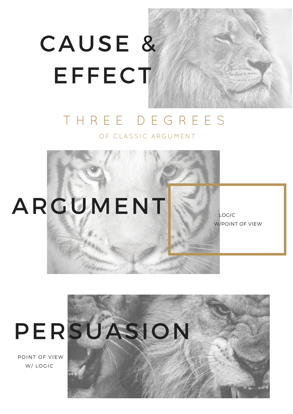America’s Healthcare Leaders founder and CEO Dan Nielsen recently interviewed Diane Watts, Strategic Communications Specialist and CEO of Watts Professional Development. We will be featuring video segments from her excellent interview in the coming weeks.
Watts brings a unique and fresh perspective to the industry. Her expertise in understanding the psychology of reason and effective persuasive communications come as the result of her 15 years of experience as an instructor of argument and analysis. Her insights and expertise have proven invaluable to sales and management teams and many others.
Today we are honored to share an article written by Watts, titled “Three Degrees of Argument.” To learn more about Diane Watts or to contact her for more information on speaking, seminars, and workshops, please visit wattsprofessionaldevelopment.com.
_________________________________________________________________________________________
The great philosopher and rhetorician, Aristotle, delineated the classification of all argument into three degrees. Even though the three degrees of argument may be closely related – of the same species, if you will – each is a different animal. While bringing the audience to your side is the central goal of all of these approaches, the variation is in method and intensity, and it is important to understand the difference.

Cause & Effect is the classification of argument that draws a causal relationship based primarily on logic – research, facts and correlation. It is the least contentious, usually very reasonable and non-threatening. e.g. smoking and cancer.
Classic Argument comes face to face with differing points of view. It is defined as a discussion among intellectuals; at its core is logic (reasoning) with a point of view attached. It is characterized by meaningful discourse with thinking people responding to each other – not reacting. Classic argument takes into account opposing views and anticipates objections.
Persuasion is the most highly charged or intense form of argument, often evoking a reaction instead of a response. At the core of persuasion is point of view, and all logic or reasoning supports that view. This approach is often perceived as manipulative and biased, ignoring the person(s) on the receiving end.
With which of these “animals” would you rather engage? For our purposes here, let’s focus on the important distinction between argument and persuasion and which is more effective.
When we assume that someone is approaching us with the intent and strategy of the third degree (persuasion), we immediately put up a wall and go on the defense, fully expecting the encounter to be a contentious one. If you are in the sales profession, if you represent a product or brand, you, perhaps more than anyone else, have been on the receiving end of this perception; warranted or unwarranted, you have been met with skepticism or indifference at best and rejection at worst. For you, this perception is extremely problematic.
So, how do we change someone else’s perception? How do we shed ready-made assumptions and stereotypes? On the receiving end, most of us would prefer to come eye to eye with the middle choice (classic argument) and engage in lucid discourse where, even though we may disagree, our disparate views are voiced, explored, and most importantly, understood. When this happens, the wall that once separated us is cracked; we may even feel it is safe to step out from behind our defensive barriers and see our opposition in a different light – as informed, clear, and rational. This brings a welcome relief to both parties, kindles the critical elements of trust and credibility, and opens the door to the possibility of influence. We will explore the demands upon the arguer and the concrete steps necessary to enable you to shift your approach – and therefore move the perception of you – to the center – to classic argument, Aristotle’s time-tested choice for successfully effecting change.
Points to Ponder
- How do you feel when someone approaches you and engages in “persuasion”?
- Do you immediately dismiss them as biased?
- Do you feel cornered?
- Why do we see “classic argument” less frequently than we used to – when most people cite this approach as the preferable mode of discourse?
- How could you incorporate this approach into your job?
- How would it make you more effective and impactful?
